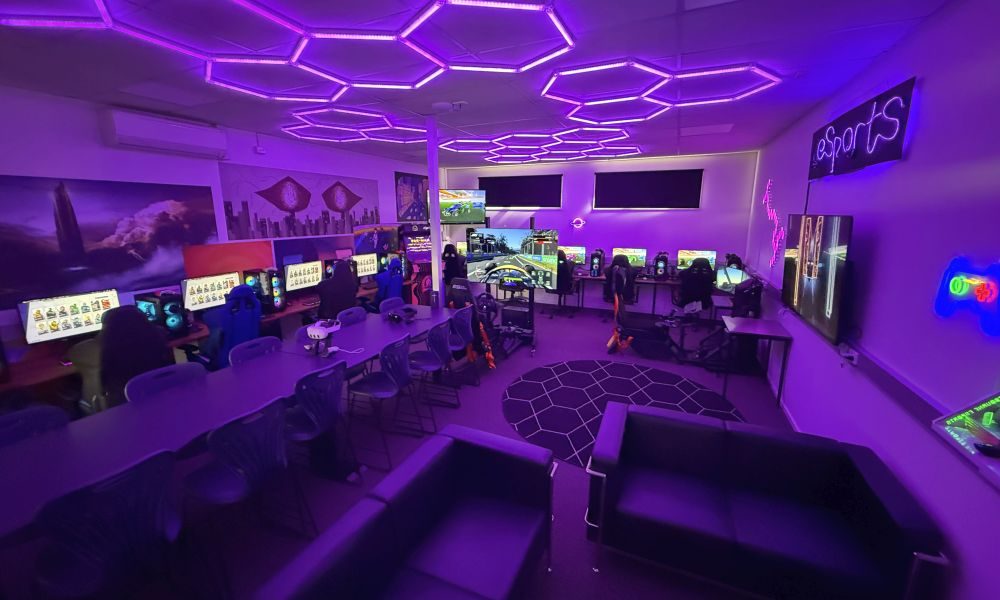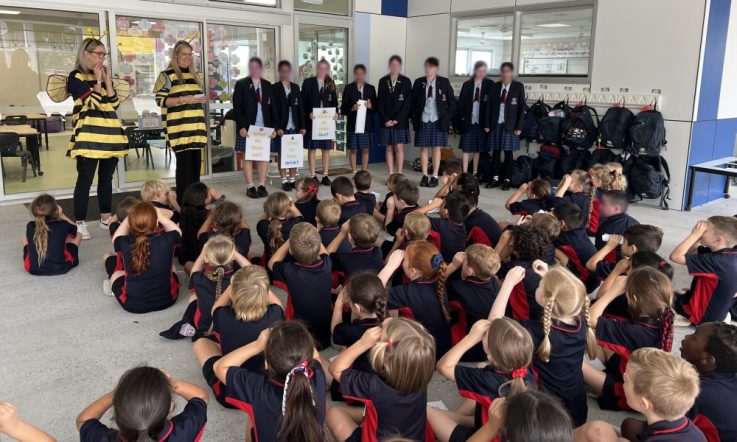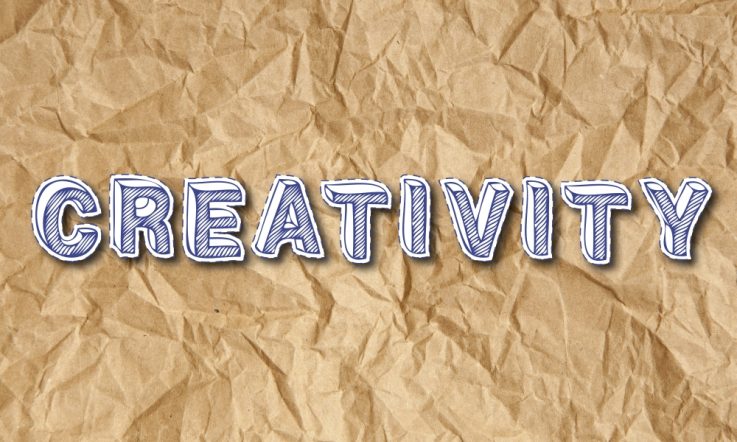‘I’m proud that Future Thinking has become a fantastic case study in how curriculum can evolve to meet the needs of the present and the possibilities of the future.’ In this article for Teacher, Liam Bassett – Director of Digital Learning (P–12) at Westbourne Grammar School – shares details of a new year 9 subject that’s been designed to ‘challenge, provoke and inspire’.
Schools are exceptional when it comes to teaching about the past. Students often learn about ancient civilisations, unpack global conflicts that have shaped our society, analyse turning points in modern politics and critically examine social movements that have shaped our identity.
The past offers a sense of certainty. It provides clear narratives, established outcomes and lessons already learned. History feels safe; it is known, documented and widely agreed upon. This focus on the past shows up across the entire curriculum. To say it clearly: this isn’t a bad thing.
Students must understand where ideas come from as it helps them to think critically, apply these skills to different contexts and recognise how knowledge has developed over time. As a teacher who has taught across various disciplines in both primary and secondary contexts, there is so much value in anchoring learning in what has come before. I’ve found it establishes clarity and a shared starting point for deeper inquiry, and it helps to equip students with the tools to understand the present through the lens of the past.
Drawing from the past, though, also aligns with how schools have traditionally been structured: content-focused, curriculum-driven and grounded in what has already been done. Assessment, too, can still encourage the recall of established facts over the exploration of emerging possibilities.
This belief – that we can learn from the past – helps to guide educators and school leaders in decision-making and making informed choices. It’s not untypical to hear phrases in education like, ‘We’ve tried this before and it didn’t work’ or ‘We should do it this way because last year…’.
There is, of course, an important reason why school leaders draw from the past; it helps us to identify ‘what works’ and what direction we should be taking. When it comes to our pedagogy, we adopt teaching practices that we know make a positive impact. When it comes to meaningful learning, we lean on evidence-based strategies that are research-informed and have been tested over time.
However, if we’re re-using lesson plans that are years’ old, are our lessons as responsive and relevant as they need to be? More importantly, are they still providing the level of challenge and academic rigour that students deserve in a contemporary learning environment? We risk preparing students for a world that no longer exists, rather than the one that they exist in right now or will be stepping into in the years ahead.
While educational environments frequently challenge students to ‘dream big’ and to ‘imagine the impossible’, I believe that systems, structures and processes can sometimes inhibit this.
And there’s the tension. If we follow what we know ‘works’, how do we justify a need for change? What is the catalyst that pushes the envelope to provide students with learning experiences that are authentic, purposeful and relevant?
Relevancy is key here, because, as we know, when learning feels relevant, students are more engaged, more motivated and more likely to see its value beyond the classroom. Relevancy connects curriculum to context (their context!) and allows them to make sense of the world they’re living in right now, not just the one that came before.
Our new year 9 subject: Future Thinking
To meet this challenge, we designed and introduced a new subject for year 9 students at Westbourne Grammar School: Future Thinking. Now in its second year, it’s a subject I had been dreaming of creating for years and the curriculum is designed to challenge, provoke and inspire.
Positioned as a precursor to VCE (Victorian Certificate of Education) English and Literature, Future Thinking invites students to critically analyse a diverse range of texts, including novels, films, podcasts, video games and TV shows. Students unpack authorial themes and messages and identify how future-focused trends make an impact on a global scale. These texts are used to analyse how narratives, genre and structure shape perspectives and viewpoints in the context of future-focused topics.
Through futures thinking and strategic foresight, they explore AI, dystopian futures, symbolism in speculative fiction, jobs that don’t yet exist and the ethics of love and connection in the digital age. They debate megathreats, unpack the influence of social media and reflect on how education itself must evolve. Guided by constructivist teaching principles, Thinking Routines and Socratic circles, students collaborate, discuss and debate ideas, and immerse themselves in a learning environment that merges the physical and digital worlds.
Each week is framed around analysing global trends, unpacking the intent behind multimodal texts and imagining possible futures. They also have the opportunity to analyse future-focused topics and trends that align with their areas of passion and interest.
When developing the curriculum – and evolving it each week - the biggest challenge is ensuring the lessons are as forward-thinking as possible. This involves horizon scanning and staying abreast of emerging developments right up to the week prior to delivery, allowing topics to remain current and relevant. The lessons also need to build on and connect to the prior lessons. Ultimately, lesson plans are designed to be reactive, adaptive and forward-thinking.
One of the most significant learning outcomes of the subject has been the development of students’ grammatical expression in authentic contexts. This has led to improved clarity, precision and voice in their written communication. Ideation is another key focus. Through the Design Thinking process, students are asked to generate ideas in response to open-ended prompts, trend analyses and speculative questions. Whether designing ethical frameworks for technology developments or reimagining future cities, they learn how to brainstorm, develop and refine original concepts while drawing from diverse media and academic sources.
Notably, the subject has also influenced students’ approach to their own futures. Several students have expressed interest in pathways connected to film, digital ethics, communications, politics and storytelling. Some have begun discussing careers in game writing, futurism, climate communication, AI law and social entrepreneurship.
Whilst the subject has a range of formative assessments, their summative assessment involves students writing analytically and drawing from one (or more!) future-focused topics and analysing how it is explored in a chosen text and its real-world relevance.
I’m proud that Future Thinking has become a fantastic case study in how curriculum can evolve to meet the needs of the present and the possibilities of the future. As part of our school’s Digital Strategy, we intend to grow Future Thinking even further, positioning it as a subject in year 10 in addition to year 9.
Curriculum development and embracing a futurist mindset
In education, embracing a futurist mindset is crucial. We can’t predict exactly what jobs our students will be doing in 10, 20 or 30 years, but we can help them develop the skills and mindset to navigate whatever comes their way.
Our role as educators must evolve to becoming facilitators of exploration and innovation. We must create learning environments that blend the digital and physical worlds, fostering spaces where students can experiment, take risks and develop their unique visions for the future.
While history teaches us valuable lessons, the future challenges us to innovate and create. I believe that schools must embrace this dual responsibility. We can’t just teach students how to solve the problems of yesterday; we must also inspire them to anticipate and solve the problems of tomorrow.
This doesn’t mean abandoning what we know works. I challenge other educators to build on the curriculum in their context, evolve it and make space for students to think critically and creatively about what comes next. If we want students to lead the future, we must help them develop skills that are future-ready.
At Teacher magazine, we love to share examples of how schools are meeting the needs of students in their own context. If you’d like to get in touch with details of what you and your colleagues are doing, send an email to the team – teachereditorial@acer.org
If you want to submit an article, take a look Teacher’s Guide for contributors, which has more information about our focus, style and submissions process.



